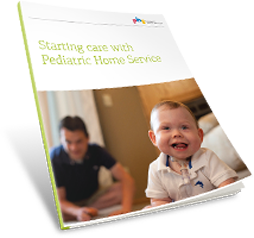Tips for National Preparedness Month
September is National Preparedness Month, a time dedicated to building awareness and encouraging Americans to take steps to prepare for emergencies in their homes, schools, and businesses. The American Academy of Pediatrics has compiled a set of tips to help ensure your family is prepared for emergencies and disasters, and what to do in the event that a disaster occurs. Ideas include creating a family disaster plan, putting together a kid’s kit with some of their favorite toys or activities and how to help children cope after an emergency or disaster happens.
For a family with a medically-complex child, preparing for an emergency can involve more steps and concerns related to supplies, equipment and care.
One of our readers provided some great tips for dealing with a power outage while they had homecare for their son in a previous post. Check the tips out here:
Lighting
It is hard to work in the dark, especially for a nurse who is less familiar with your home. A couple flashlights should always be sitting out in obvious places, so everyone automatically knows where to find them when the lights go out.
Have small rechargeable lights that plug into electrical outlets and turn on automatically when power fails. A few of these in key areas ensures that no matter where people are when the power goes out, caregivers can safely and quickly stop what they are doing and start switching over to oxygen tanks. No stumbling or fumbling in the dark (you can find these lights at places like Home Depot or Lowes).
Most cares are best done using both hands under good light. Everything is harder if you are holding a flashlight that shines a narrow beam. A flashlight is often not as useful as a small battery-powered lantern. A cheap LED lantern can offer a lot of light for a low price, and keeps your hands free ($10 for a 24-LED lantern at Target. More rugged camping lanterns may cost more).
You can rig some extra light by simply taking a spare power strip, hanging it on the wall, and plugging in three of the rechargeable power failure lights. When the power fails, there is always a light where it matters.
Practice
When the power goes off, it may be with a nurse that doesn’t normally have any need to switch from the regular oxygen setup to a portable tank. You never know when the power will fail, so every caregiver should be able to do the switchover on the spur of the moment, and know where everything is (like the little wrench for the tanks).
A little more expensive
You can stock a spare computer UPS, which may be helpful to provide extra power for any small device like a feeding pump, or pulse oximeter, or lamp. It cannot power anything like a concentrator or refrigerator. However, you can plug a regular fluorescent light into it. This can give good light for about an hour, sparing a lot of batteries while working on getting the generator running.
Keeping cold
There are a few things you can do to help with refrigeration during power outage, using a small “dorm” fridge for medications (and the nurse’s lunch) or a larger fridge:
- Try to keep the empty space in your refrigerator filled with water bottles. You can just use water or soda bottles and fill them with tap water. Why? When the power goes out, your refrigerator will be filled with cold water. It takes much more heat to warm up all of that cold water than a fridge with just empty air. Your medications and formula will stay cool for a bit longer.
- When the power goes out, after tending to urgent problems, throw some blankets, quilts, or sleeping bags over the refrigerator. This adds insulation and helps preserve the cold.
- It can be impossible to go to the store for ice in the hours immediately following a power outage. If you have a separate freezer, keep a bunch of ice packs in there so you can move them over to the fridge with medications and formulas if needed.
How do you and your family prepare for emergencies? If you have homecare for your child, are the nurses aware of the emergency plan? Share your tips!
Originally published: September 5, 2013

